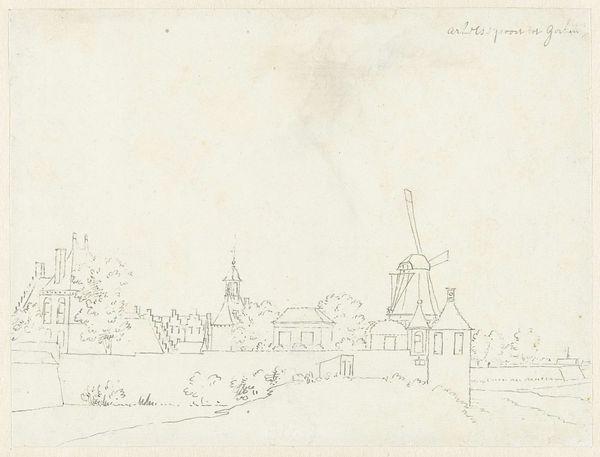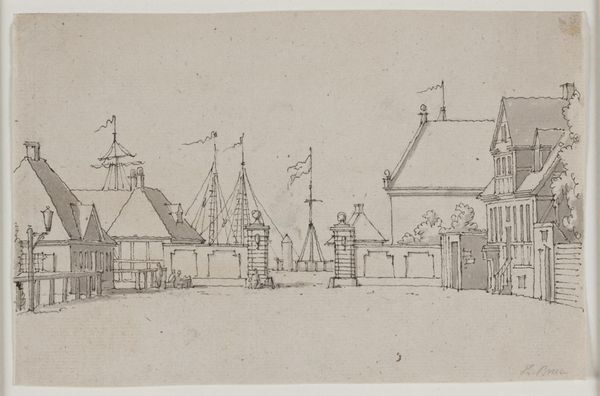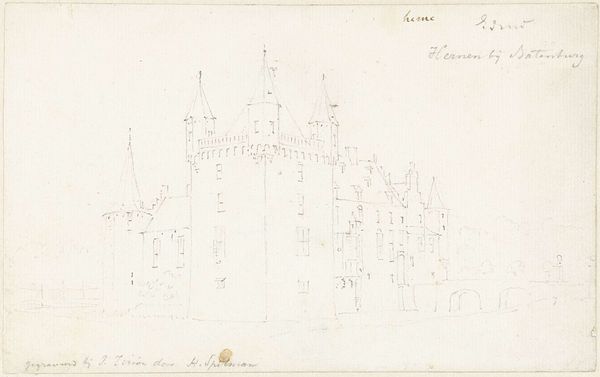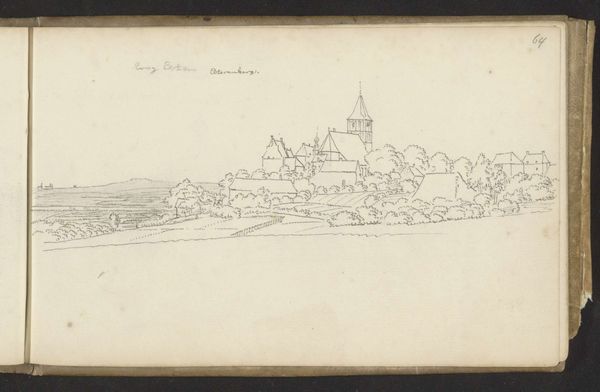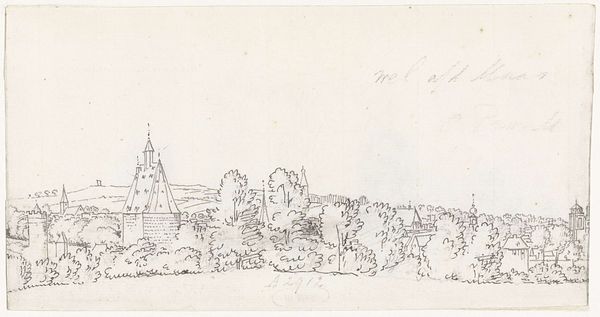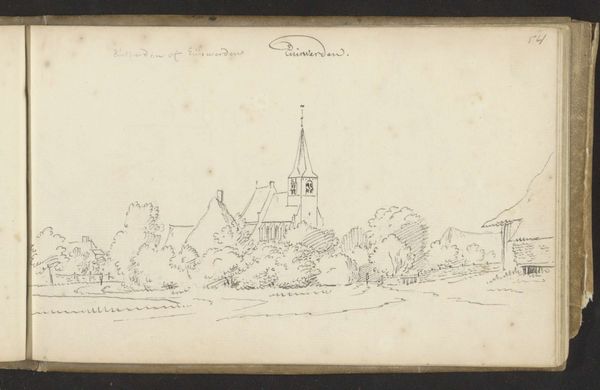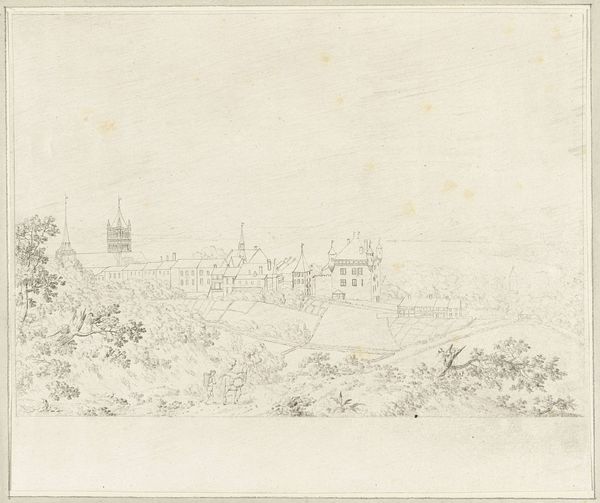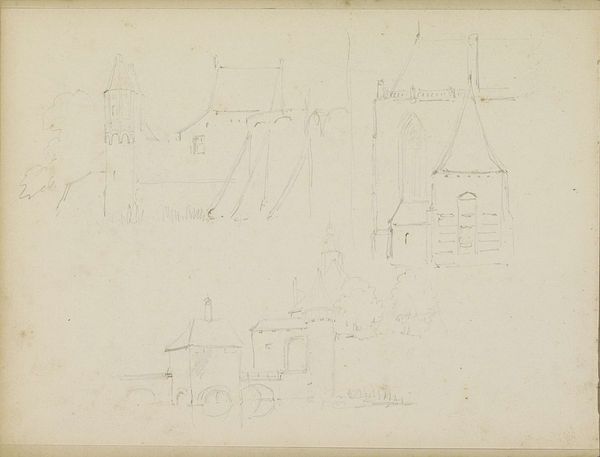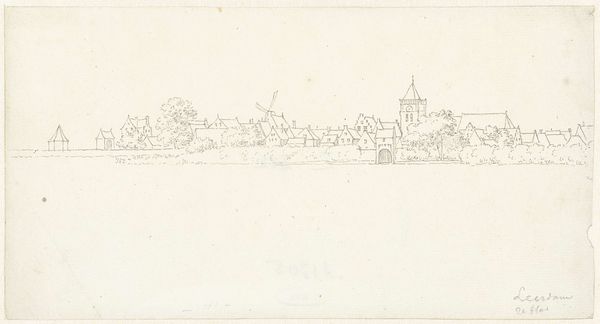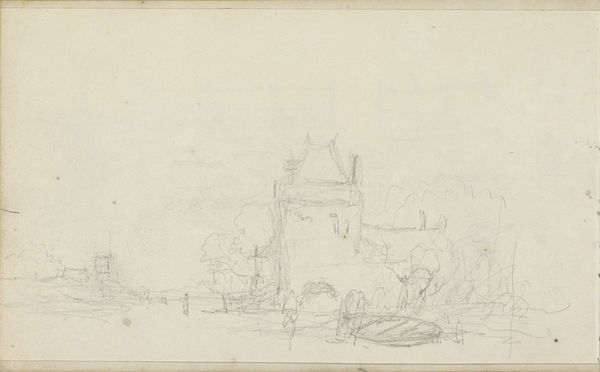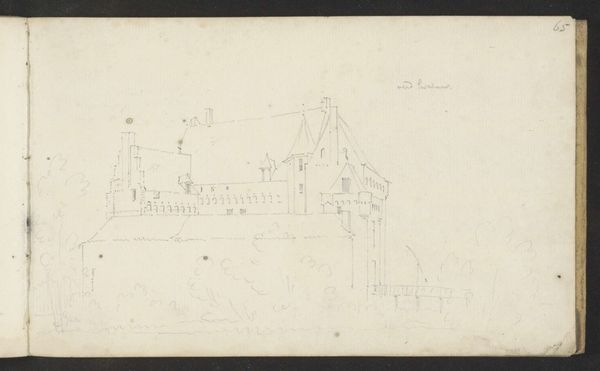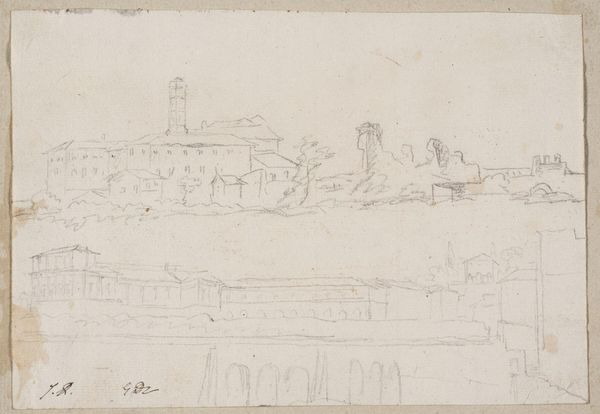
drawing, pencil
drawing
light pencil work
quirky sketch
dutch-golden-age
old engraving style
landscape
personal sketchbook
idea generation sketch
sketchwork
pen-ink sketch
pencil
line
sketchbook drawing
genre-painting
sketchbook art
initial sketch
Dimensions: height 147 mm, width 194 mm
Copyright: Rijks Museum: Open Domain
Curator: This is "De Veerpoort te Leerdam," a pencil drawing by Cornelis Pronk, made sometime between 1701 and 1759. It’s currently held here at the Rijksmuseum. Editor: My first thought is how fragile it seems, like a whisper of a place. The muted tones give it an ethereal, almost dreamlike quality. Curator: Indeed. What’s striking from a formalist perspective is Pronk’s masterful use of line to define form and space. Note how the delicate lines articulate the architecture—the windmill, the gate, and the fortifications. Editor: There's a simplicity to it, isn’t there? It’s not trying to be grand. It's a quiet observation of everyday life. The texture, or the implication of it through those fine lines, reminds me of memories – faded but cherished. I can almost smell the dampness of the stone and feel the breeze from the windmill. Curator: Absolutely. Pronk’s keen eye captures the essence of the Dutch Golden Age landscape. He employs a linear perspective, subtly guiding the viewer's eye from the foreground—that sparse grass—to the distant architectural structures. Editor: The composition draws you in with the subtle contrast between the lightness of the sky and the weighted buildings on the ground. There’s an evocative tension in its simplicity that I think reveals not just what the scene looked like, but what it felt like. You can feel the story waiting to be told behind these gates and within the city. Curator: And if you consider that many of Pronk’s drawings served as preparatory sketches for larger, more elaborate works, this piece also functions as an invaluable window into his artistic process. We can trace his thought process. Editor: That adds another layer! It’s like catching an artist mid-thought, peering into the genesis of something bigger. It becomes intimate, revealing more than just a place, but a moment of artistic creation. It makes one consider that the best drawings always retain the purity of their first mark, the unadulterated emotion that led to its being. Curator: Precisely. The deceptive simplicity belies a profound technical skill and conceptual rigor. Editor: Yes, even this seemingly quick sketch hums with quiet intent, its hushed aesthetic carrying the weight of its artistic origin and cultural past. Curator: Well observed. It certainly provides plenty to contemplate about art, observation and memory.
Comments
No comments
Be the first to comment and join the conversation on the ultimate creative platform.
